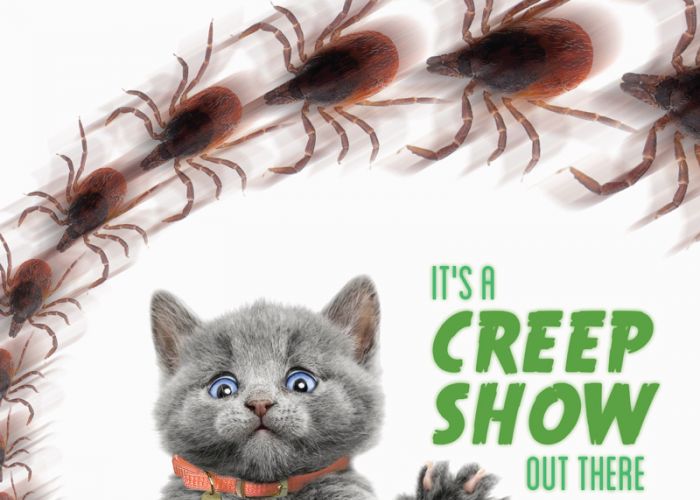Fear and loathing and feral fosters
Finding the least stressful path for unsocialized cats with health issues
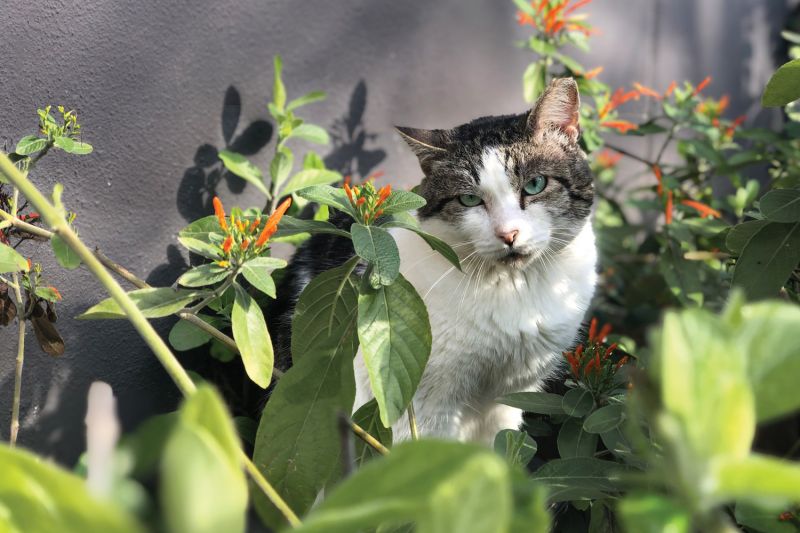
For two weeks in December, I had a hostile houseguest, one who glared at me with suspicion whenever I accidentally caught his eye.
Big Bruiser was 13 pounds of muscle and glossy black fur, with the bulging jowls and battle scars of a seasoned tomcat. He was a regular at a backyard cat colony I’d recently trapped, and I was thrilled to finally nab him and deliver him to the spay/neuter clinic.
Later in the day, I learned that Big Bruiser had a leg injury that required stitches. The veterinarian wanted to see him again in two weeks to make sure the wound was healing properly. And so instead of returning to his territory after a night of recovery, Big Bruiser would need an extended stay at my home.
For those of us involved in community cat care and trap-neuter-return, it’s not an uncommon scenario. While most cats need nothing more than your standard spay/neuter package, occasionally there’s one who needs extra treatment for conditions ranging from glaucoma to open wounds to broken bones.
On top of that, we have the day-to-day work of ensuring the health of cats who have already been sterilized and returned to their territories. And with more community cats living into their teens, we’re increasingly addressing geriatric health issues.
Part of the challenge is that most veterinary treatment protocols have been developed with tame cats in mind—ones who will happily reside in a spare bedroom, will let you check their wound and can be pilled twice a day. So how do we treat cats like Big Bruiser, who are about as socialized as your average raccoon?
It’s something the animal welfare field is still trying to figure out, says Danielle Bays, senior analyst for cat protection and policy at Humane World for Animals. “There’s no handbook for this. You do what you think is best with whatever resources you have. We learn from our own experiences and what others have learned.”
“There’s no handbook for this. You do what you think is best with whatever resources you have.”
—Danielle Bays, The HSUS
Do we really need to treat this?
If your group has an adoption program, you’re likely already making medical treatment decisions based on things like long-term prognosis, quality of life and organizational resources.
For feral cats, there’s an added layer of complexity. You have to factor in the colony situation, the caretaker’s ability to provide ongoing care and monitoring, and whether you’ll be able to retrap the cat if his condition deteriorates. If the treatment will require an extended stay in a shelter or a foster home, you’ll also need to consider the cat’s degree of wildness and how well he’ll tolerate captivity, even though you may not know the answers to these questions until he’s been in your care for several days.
There are no cookie-cutter solutions here, but one thing that’s well-established is that stress has a huge impact on cats’ health. For feral cats, medical decisions must balance the potential benefits of intervention with the risk that the stress of captivity and handling will exacerbate the problem.
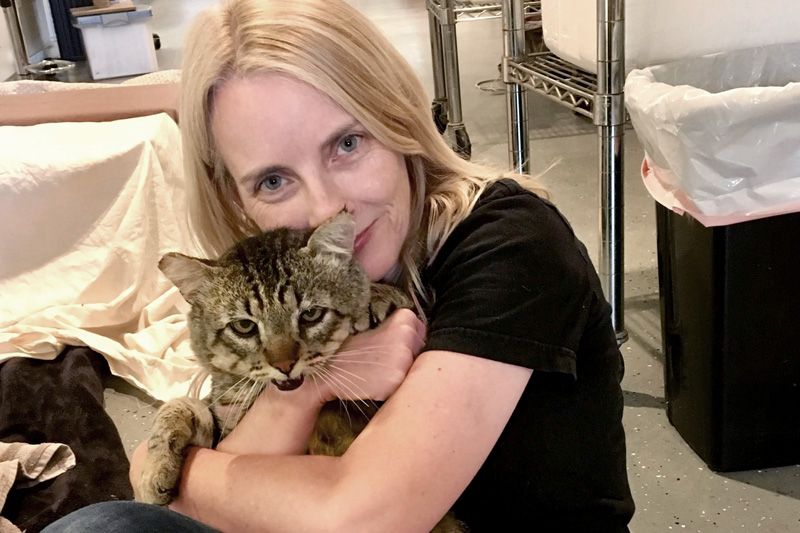
So the first question you should ask is “Do I need to really treat this?” says Dr. Heather Kennedy, a veterinarian and director of feline operations at the KC Pet Project in Kansas City, Missouri.
A common mistake Kennedy sees is people confining feral cats in order to administer antibiotics for an upper respiratory illness. Feline URI is almost always viral-based and stress-related, she notes. While there may be a secondary bacterial infection, treating the cat with antibiotics is “kind of a self-defeating thing. What might be fine for your tame house cat, for this feral cat we’re stressing the cat out. … If we’re mixing the antibiotic with food, that’s even more stressful for the cat, because now we’re providing a food source [he] may not want to eat.”
“The best thing we can do is to end the stress so the virus goes away and the bacterial infection goes away. … We eliminate reproduction stresses by spaying or neutering them, and then we put them back out and we eliminate the stress of captivity, and we have a healthier cat right away.”
“The best thing we can do is to end the stress so the virus goes away and the bacterial infection goes away.”
—Dr. Heather Kennedy, KC Pet Project
Bays, who has been doing TNR in Washington, D.C., since 2008, also recommends a wait-and-watch approach whenever a sterilized colony cat shows signs of a minor wound, a limp or an upper-respiratory virus.
At the same time, she admits that watchful waiting isn’t always easy. “It’s that instinctive rescue mindset that if we have that animal in our care, somehow that’s better. That emotional level is hard to address. I try to look at the situation through my own lens: Is that something I’d go to the doctor for, or do I know that cut will heal or my cold will go away?”
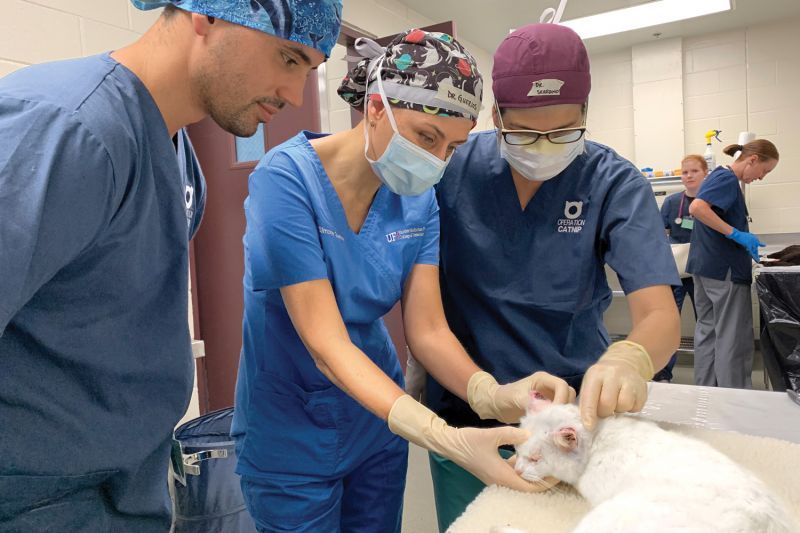
What type of treatment is feasible?
Of course, there’s a wide range of medical issues that do require intervention, and it’s a testament to the growing strength of community cat programs that more and more organizations have the resources to provide not just spay/neuter surgeries but eye enucleations, tooth extractions, tail and limb amputations, and other major procedures.
For a feral cat, surgeries should be performed with the knowledge that post-operative care may need to be minimal, Kennedy says. “I tell the vets I work with, and I told my vets before I became a vet, ‘I want you to assume that this will be the only time you ever see this cat and that I will not be able to do any [additional] treatments on it,” she says. So, for example, they should always use dissolvable sutures, and “maybe I’ll be able to bring the cat back in, maybe it will turn out to be a tame cat, but always assume … that they’re never going to see the cat again.”
It’s a scenario similar to what wildlife veterinarians face, says Dr. Julie Levy, who teaches shelter medicine at the University of Florida and founded Operation Catnip, a high-volume spay/neuter clinic for community cats in Gainesville.
Feral cats are “not such wildlife that they would die of capture myopathy,” a muscle disease caused by extreme stress, “but they are terrified the whole time they’re confined” and their health can deteriorate as a result.
Knowing that some cats won’t tolerate captivity and will need to be released soon after surgery, it’s vital that TNR programs work with veterinarians trained in high-quality surgical techniques.
“It starts with being sure that the surgeries are minimally traumatic, minimally invasive, because those heal quickly and have less pain,” says Levy. “So we really want our community cat surgeries to be performed by surgeons who are efficient and use small incisions and gentle tissue handling. And it also starts with providing excellent preemptive pain management, so you get those pain meds onboard before the surgery starts to reduce overall pain.”
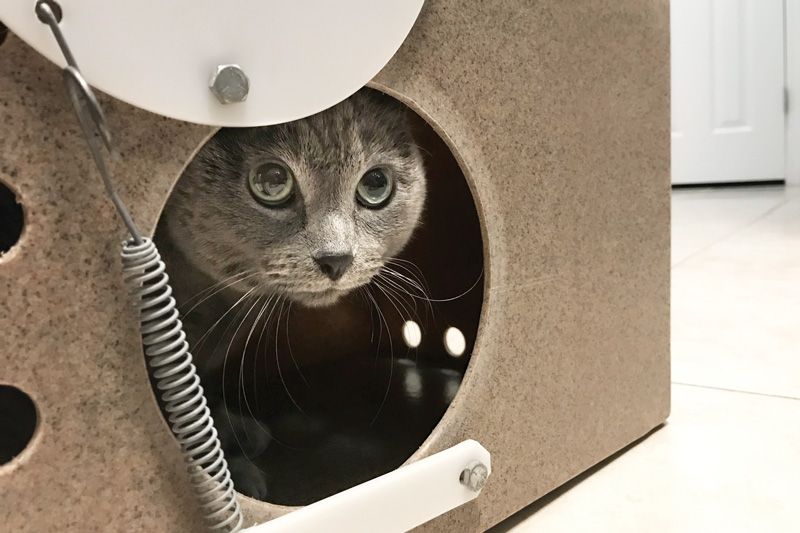
How long do we need to hold this cat?
For the vast majority of community cats who simply need spay/neuter surgery, Levy recommends releasing them the day after surgery as long as they have recovered normally. With skilled procedures and pain management, “there really is no benefit to keeping routine surgeries for multiple days,” she says.
In the case of major surgeries like a leg amputation, Levy believes it’s appropriate to keep tamer cats longer “because we can optimize pain management and watch for healing.” But unsocialized cats may be better off with a quicker release. “We’d like to hold them up to a week,” Levy says, “but that’s often not well-tolerated, and they can be released earlier if they have an observant caregiver.”
Before she became a veterinarian, Kennedy co-founded a TNR program and regularly fostered feral cats with medical issues. She began to suspect that when it comes to post-operative care for ferals, less can be more. At veterinary school, the most important lesson, she says, came from her anesthesiology professor, who taught her that stress delays healing and increases the perception of pain.
Today, she rarely keeps a feral cat more than one night after any surgery. “I want the kitties to get injectable antibiotics if needed and an injectable form of analgesia,” she says. “And the next day, with that in mind—stress delays healing and increases the perception of pain—they go right back out.”
Surgical complications are rare, she notes. And whether a surgery involves removing a shattered limb or infected teeth, “we’ve done what we can to eliminate the source of pain, so now the only reason to hold onto that cat is if we’re worried he’s going to pull sutures or whatever. And maybe that will happen, but we probably aren’t preventing it by keeping the cat in captivity. … We’re just waiting for some potential adverse effect to happen, which probably won’t.”
What's the right decision for this specific cat?
Not all medical issues can be addressed by a single surgery. For chronic diseases that are difficult to treat and cause significant suffering, Kennedy considers euthanasia a more humane option for ferals than return-to-field. But, again, there are few hard-and-fast rules. She euthanized an elderly hyperthyroid feral from one of her colonies whose health was visibly deteriorating; in another colony, she continues to administer daily medications to a semiferal cat suffering from the same disease.
The difference between the two cases, she says, is that the second cat shows up reliably for dinner every night, and she figured out a way to medicate him. Decision-making for the cat, Kennedy says, depends on your ability to handle and treat the cat—humanely.
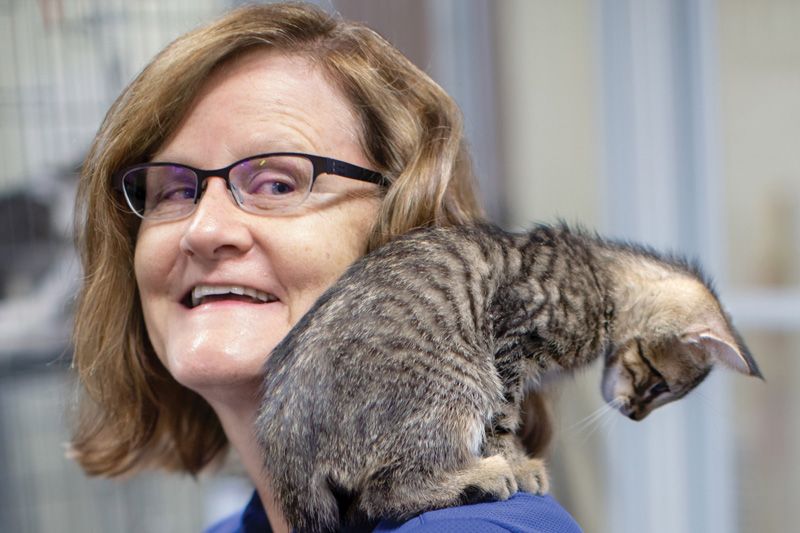
Since community cats have different levels of socialization and adaptability to confinement, what is humane for one cat may not be for another. There’s a lot of unpredictability in this work, but one thing any group doing TNR can count on is this: At some point in time, you’ll be faced with making medical and foster care decisions for a cat without knowing for sure how the animal will fare in captivity.
“It’s really something that any organized TNR effort needs to plan for in advance,” says Bays. That means having people within your foster or caretaker network who are willing and able to care for ferals and the crates and equipment to loan them, she says, as well as working with veterinarians who understand these challenges.
It also means being prepared to switch up your planned treatment, Kennedy adds. “If your surgeon really feels strongly that you need to hold the cat, then you can try fostering the kitty” to see if he exhibits normal behaviors—eating, drinking and using the litter box—in captivity. If he doesn’t, Kennedy says, he should be returned to his colony.
“One of the reasons there’s so much anxiety around this topic is that we don’t have followup data to guide us.”
—Dr. Julie Levy, Operation Catnip
What can we do better?
As for Big Bruiser, when his two weeks were up, he went back to the veterinary clinic and got a clean bill of health. Late that evening, he sprinted out of the trap into his backyard. A few days later, his caretaker reported that he and the other cats were doing well.
Still, I couldn’t help but wonder if the outcome would have been the same if I’d released him the day after his surgery. Had he endured two traumatic weeks in a cage for no good reason?
It’s impossible to know for sure. And for people in our field, who want to spare animals from all unnecessary suffering, that not knowing is difficult.
Since Big Bruiser’s release, I’ve purchased a feral cat recovery cage and a second dog cage to double the space for my future feral fosters. I’ve chatted with other TNR volunteers about their foster care strategies and been reminded that these cats have dedicated advocates who are hungry for knowledge that will help them serve the animals’ best interests.
“I think one of the reasons there’s so much anxiety around this topic is that we don’t have follow-up data to guide us,” Levy says. She hopes the future will bring safe, long-lasting pain drugs for free-roaming cats and studies to assess different post-operative care strategies.
Meanwhile, “we have to do the best with what we have,” Levy says. “Fortunately, for most of these cats, if we can’t give them the ideal [foster] circumstances, it’s hopefully a short-term negative experience, and it’s worth it in the long run for them. But I don’t think that lets us off the hook from trying to constantly improve.”





